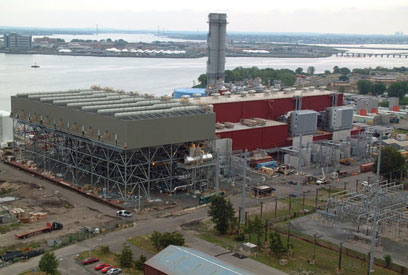By Bill Parry
It took eight years of protests and political pressure from elected leaders before the New York Power Authority agreed to permanently shut down the Charles Poletti Power Project in 2011. The 33-year-old natural gas and oil plant was deemed the city’s worst polluter and a prime reason western Queens, which produces 60 percent of the city’s electricity, was nicknamed Asthma Alley.
NYPA replaced the Poletti plant with a 500-megawatt plant in 2005, and last week NYPA announced it has become more efficient with new technology. A comprehensive central command center is now online that analyzes the performance of its expansive generation and transmission network and identifies potential problems before they can cause service outages. In time, NYPA intends to use the center to also monitor its cybersecurity, physical security and network operations as well as information technology and operations technology services throughout its generation and transmission system, which stretches from Massena, N.Y., near the Canadian border to eastern Long Island.
“This is an exciting milestone in our digital journey,” NYPA President and CEO Gil Quiniones said. “The Integrated Smart Operations Center will become the new standard in utility management and help us fulfill our core mission to provide power to our customers that is both low in cost and reliable.”
The center will use asset performance management software provided by GE Power using sensors embedded in equipment such as turbines and transmission lines. It will better enable NYPA to better detect problems that could affect the utility’s ecosystem, sometimes weeks in advance.
“Our neighborhood knows all too well the dangers associated with blackouts and service disruptions,” state Sen. Michael Gianaris (D-Astoria) said. “Any efforts that would prevent such incidents from occurring are a welcome step in the right direction.”
Gianaris has been a leader in efforts to reform utilities since western Queens suffered through the historic blackout of 2016. More than 175,000 customers in Astoria, Long Island City, Sunnyside and Woodside were plunged into darkness during a heat wave July 17 and service was not restored for eight days.
The electricity came from Con Edison’s Long Island City network, which was found to have failed equipment and feeder cables as old as 70. The length of the blackout added to the estimated damages of nearly $200 million.
NYPA will use the system initially at the Astoria power plant before expanding it to monitor assets at all of its facilities. The nation’s largest state-owned utility, which operates 16 generating plants and owns one-third of New York’s high-voltage power lines, will help create an energy system in New York that is cleaner, more efficient and resilient.
“With this deployment, NYPA is pioneering change in the digital transformation of the electricity industry, setting NYPA up for success and ensuring its goals related to efficiency and customer demand can be met,” said
GE Power Chief Digital Officer Ganesh Bell. “
Reach reporter Bill Parry by e-mail at bparr




































